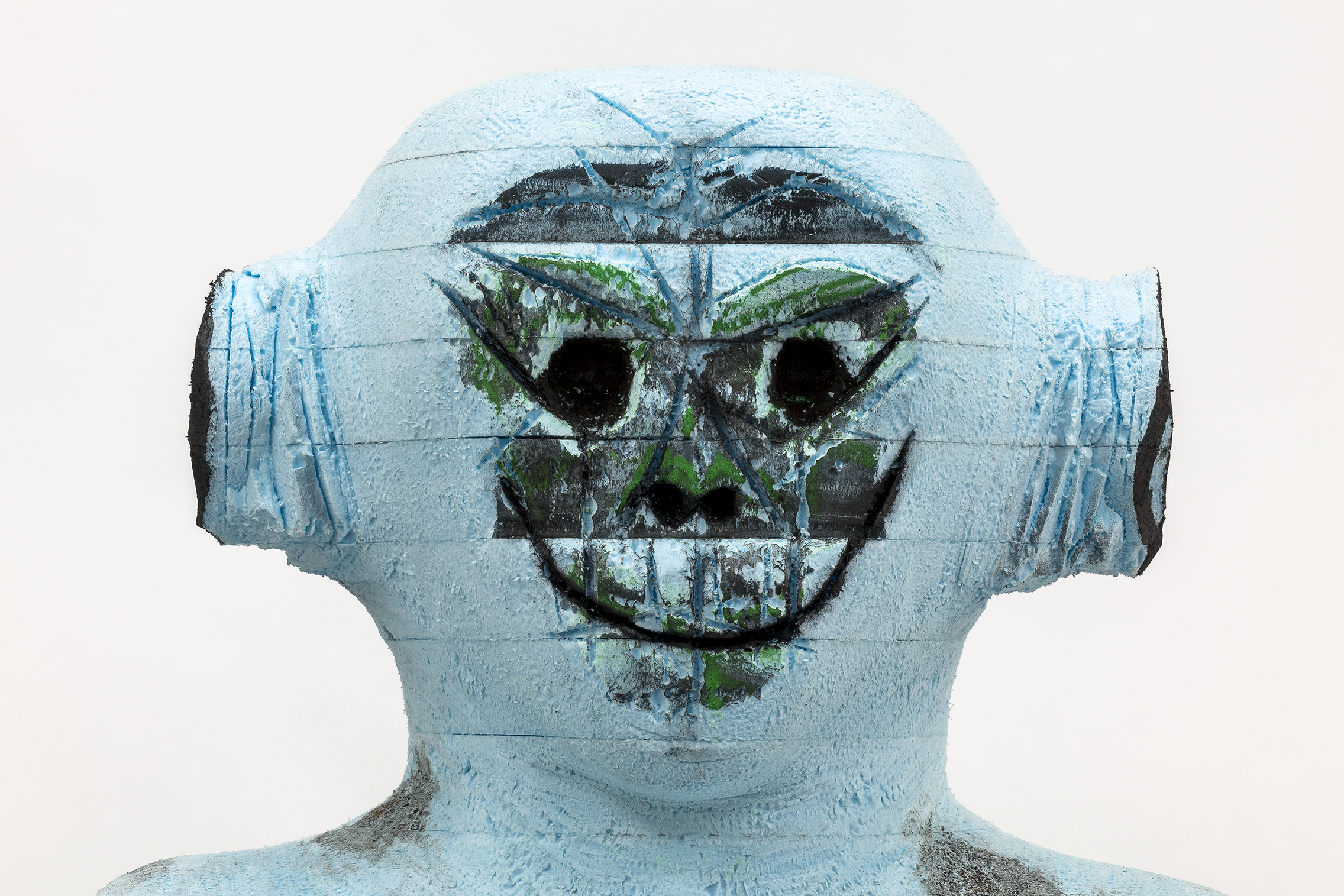
HUMA BHABA
Curator speaks with the artist about her new exhibition, Facing Giants, at Salon 94 in New York.
Huma Bhabha’s (b. 1962) work addresses themes of memory, war, displacement, and the pervasive histories of colonialism. Using found materials and the detritus of everyday life, she creates haunting human figures that hover between abstraction and figuration, monumentality and entropy. While her formal vocabulary is distinctly her own, Bhabha embraces a post-modern hybridity that spans centuries, geography, art-historical traditions, and cultural associations. Her work includes references to ancient Greek Kouroi, Gandharan Buddhas, African sculpture, and Egyptian reliquary. At the same time, it remains insistently modern, looking to Giacometti, Picasso, and Rauschenberg for inspiration, as well as to science fiction, horror movies, and popular novels.
Interview by Dan Golden
Are the sculptures and works on paper in your new exhibition the “giants,” or is that too literal an interpretation?
It's all psychological and imaginative rather than literal, and the power that can be exerted through focus and familiarity.
I am intrigued by how these works live in Salon 94’s new gallery environment. How does space affect your work, both in the context of this current exhibition and in general?
I made the new work for the show with the new space in mind...how the work would look and how the space would be highlighted by the presence of the work inside it. I prefer to show my work in a minimal way...less is more for me.
Installation view, Huma Bhabha, Facing Giants, 2021. Courtesy of the artist and Salon 94, New York. Photo: Dan Bradica
Installation view, Huma Bhabha, Facing Giants, 2021. Courtesy of the artist and Salon 94, New York. Photo: Dan Bradica
Would you prefer the viewer to fear, love, or empathize with your figures? Or none of those?
Love.
You employ traditional and non-traditional materials (i.e., styrofoam, lipstick, found objects, etc.). What draws you to the materials you work with, and what is their significance for you?
I have been using found materials for a long time because of my early interest in assemblage and collage. Using a combination of opposite materials has always been of interest, making the work architectural and organic at the same time, picking up on the inherent qualities of the different materials like styrofoam, cork, bronze, clay, plaster, and paint and how they interact, ultimately completing the story of my figures as beings existing between worlds, past, and future, war, and peace.

Huma Bhabha, Number One, 2021, Painted bronze, 32 3/4 x 12 1/2 x 12 inches
Huma Bhabha, The Ancient and Arcane, 2021, Patinated bronze, 34 x 17 1/2 x 14 inches
One can observe various historical art references in your work. However, I’m curious to hear about some of the more contemporary, perhaps unexpected, touchpoints. Can you share a few of them with me?
Wolves, Corgis, South Park, Supernatural TV series, John Carpenter's The Thing, Foreign Crime Dramas, The Raid: Redemption 2011, Obscure Film Noir, Garage Rock (Primitive George Radio Show on WVKR Vassar College), Martian Time-Slip, Shaw Brothers Films.

Installation view, Huma Bhabha, Facing Giants, 2021. Courtesy of the artist and Salon 94, New York. Photo: Dan Bradica



